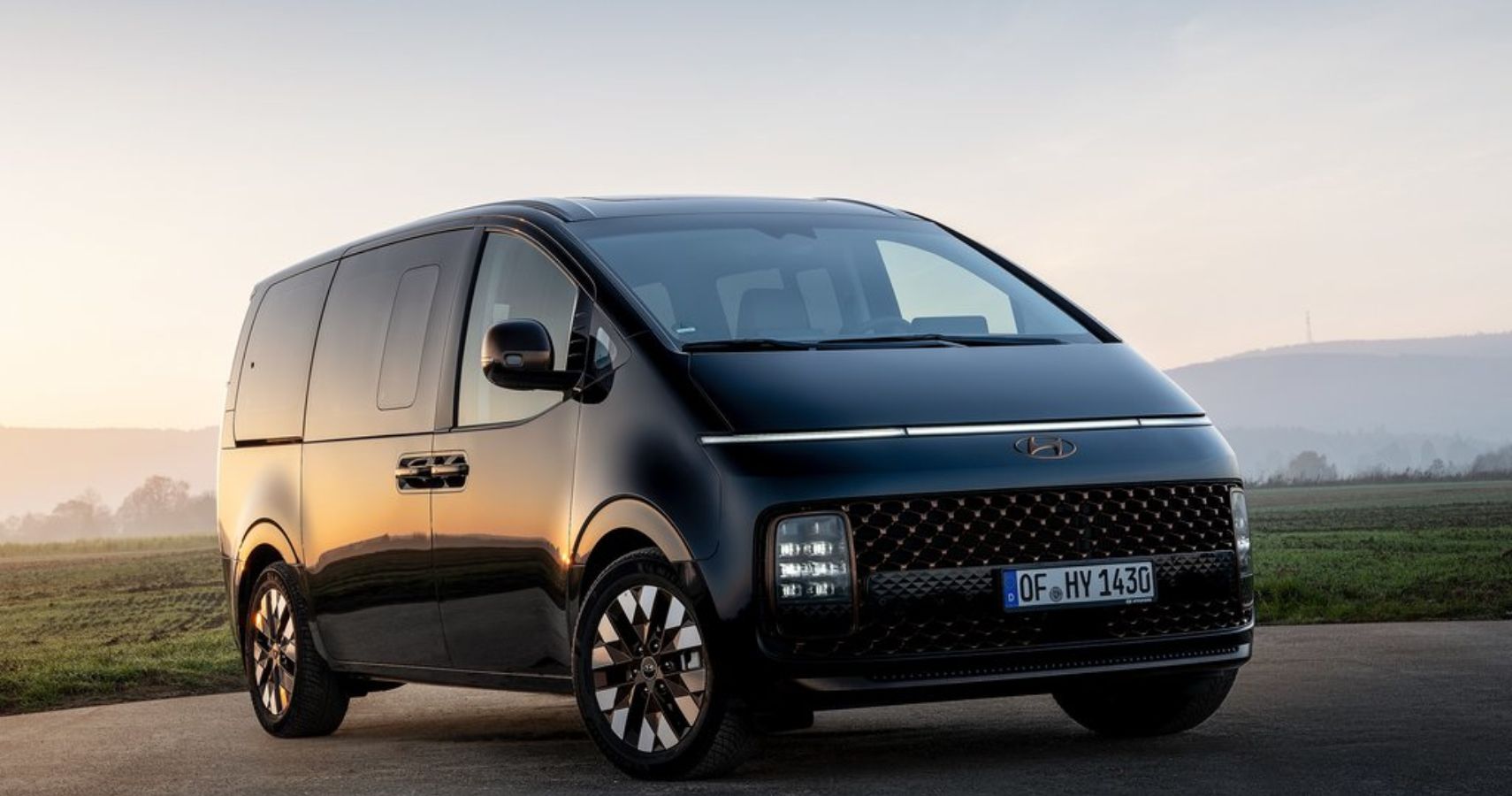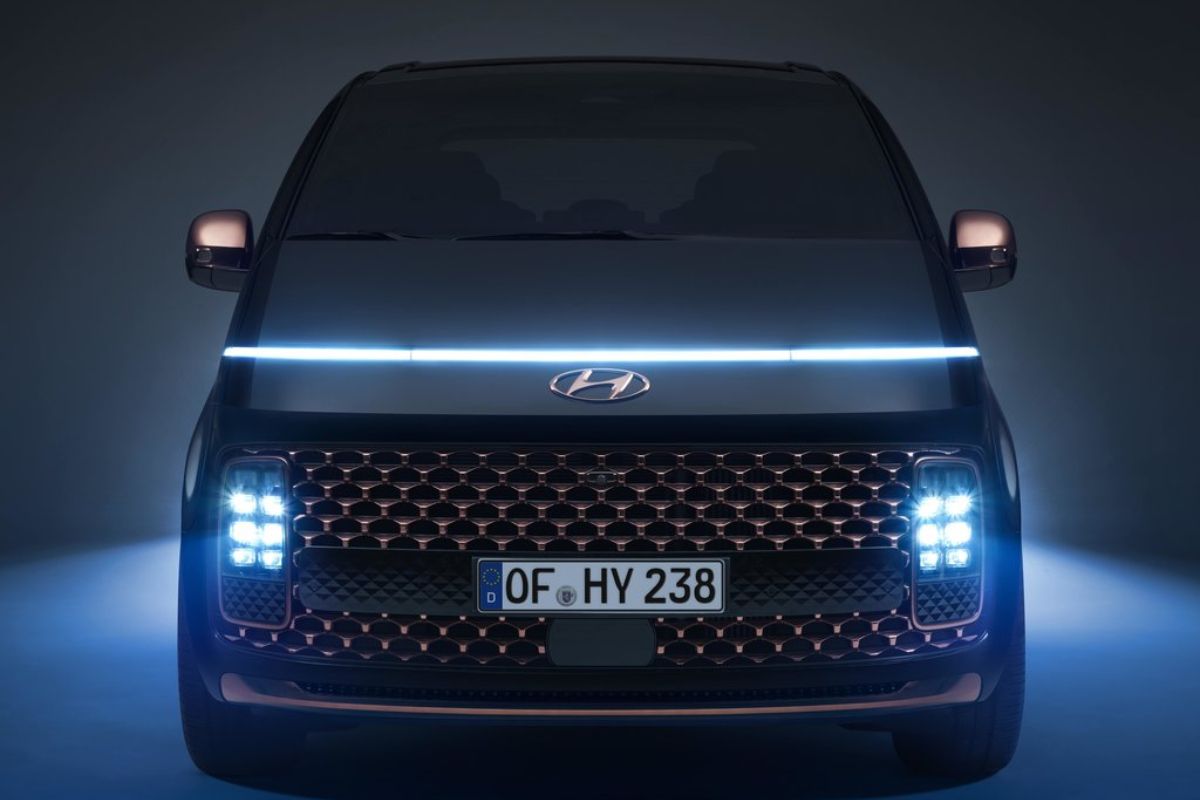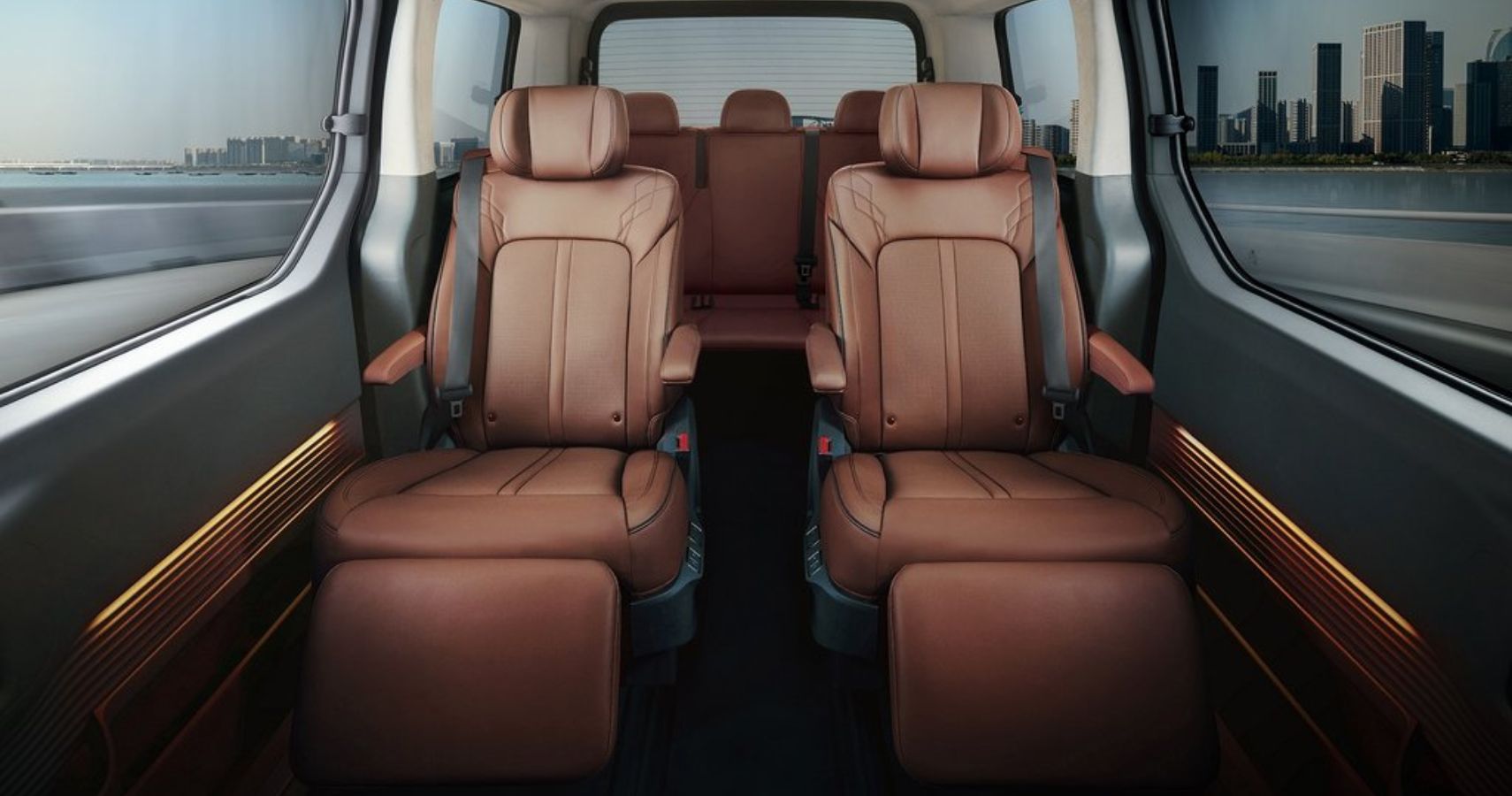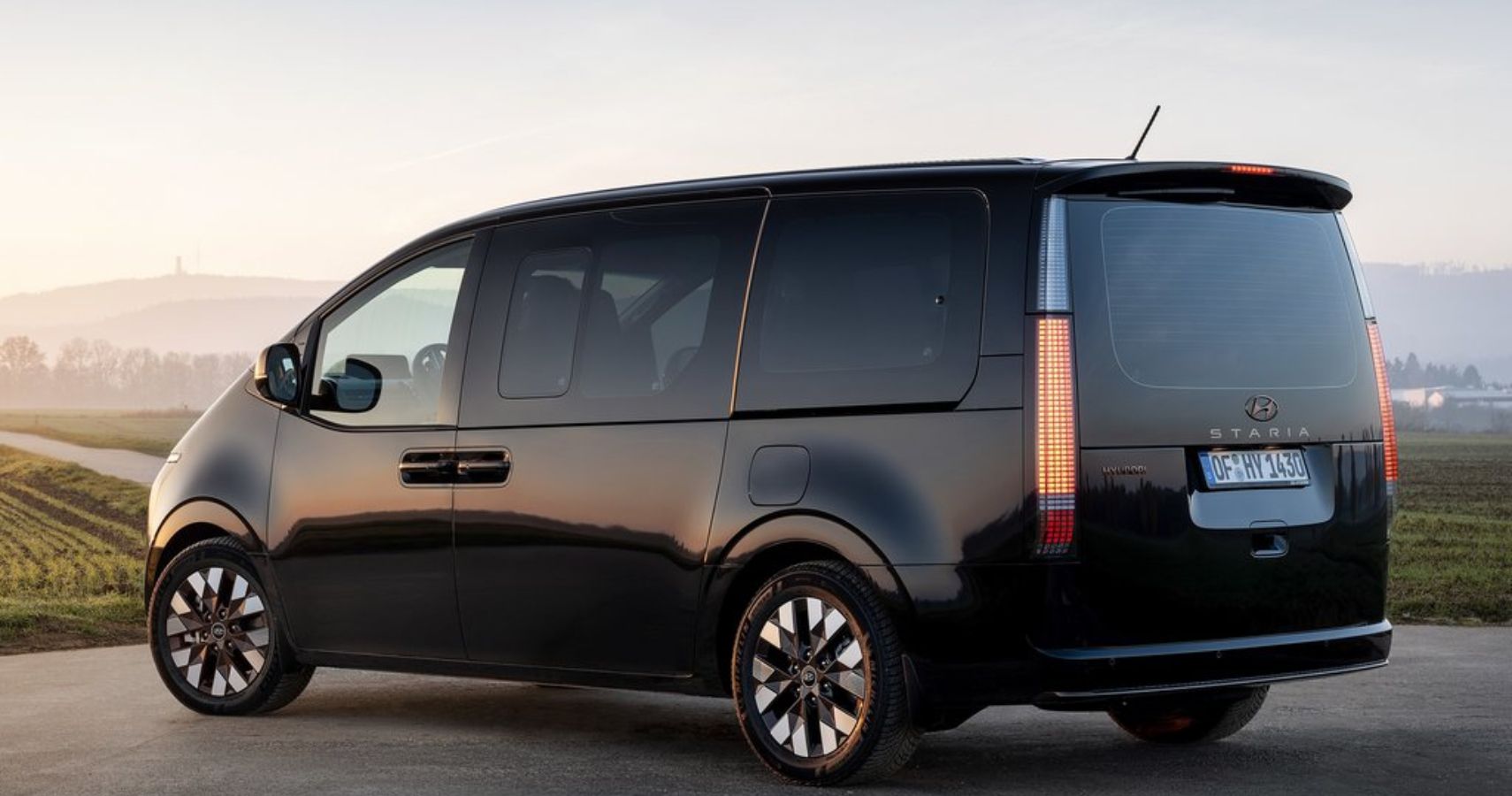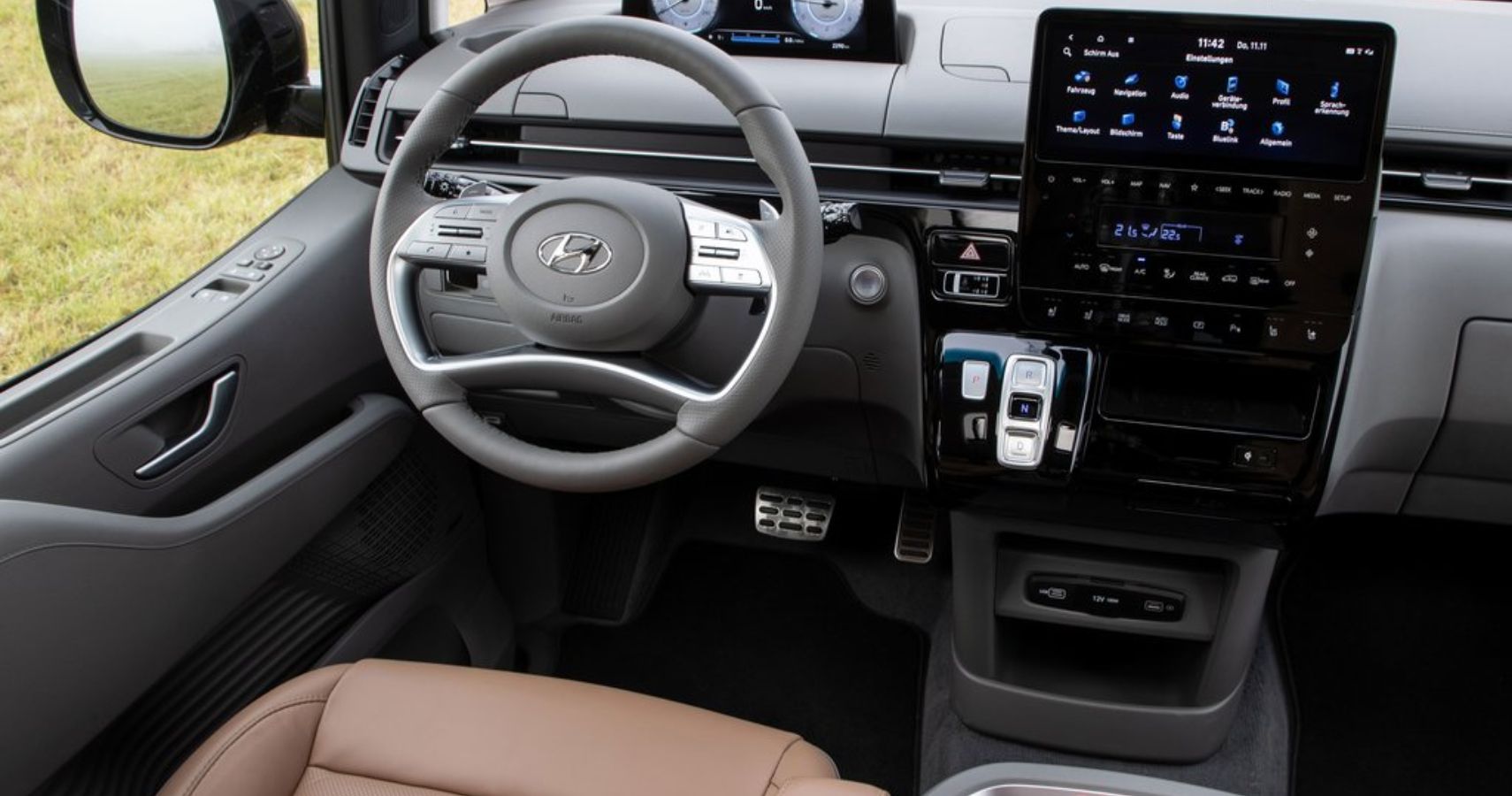Since the 1980s, SUVs have primarily dominated the American auto market. As a result, smaller vehicles, notably sedans, continue to face stiff competition that causes low sales and ultimately leads to their premature retirement. The Minivan class, on the other hand, never appears to lose its appeal as the ideal and comfortable form of transportation for families. There aren’t many Minivans in America today. There’s the Chrysler Pacifica, the Honda Odyssey, and the Toyota Sienna, and a few more. The Minivan you didn't realize you needed in America is the Hyundai Staria.
The Hyundai Staria went on sale in 2021 and dominated Korea and Australia, and other markets, taking on the likes of the Peugeot Expert, the Ford Transit, and more. A few updates later, it’s energizing and exciting to see Hyundai make the now outmoded Minivan seem so desirable in a segment that even its creators are quickly leaving in favor of the ubiquitous SUV.
However, in addition to not being available in the U.S., the Hyundai Staria is currently not on offer in the UK as well. European customers can select between two- to 11-seat Vans, Wagons (also known as MPV), or higher-spec Wagon Premium models.
We're taking a deeper look at the Korean Hyundai Staria, examining its appearance, its interior space, and its adaptability, and talking about why, despite the enduring popularity of SUVs, it would make a great Minivan for the U.S. market.
The Hyundai Staria’s Exterior With Modern, Futuristic Styling Cues
The Hyundai Staria has a sleek, sci-fi-inspired design that won accolades, including the Good Design Award, alongside the Hyundai Ioniq 5. Developed under design director, SangYup Lee, this exterior design adds a highly appealing twist to the traditional box-on-wheels shape. Key features include a striking mesh grille, horizontal full-width DRLs, and vertically stacked LEDs, as well as an extremely rakish bonnet that flows into a similarly swept back windshield.
Except for the Lite, which has exceptionally well-concealed bulbs covered in a pixel pattern, all variations' LED headlamps are beautifully complemented by their distinctive pixel tail lamps in the Tetris-style design.
Putting the face aside, the Staria's ultra-low beltline, which provides the MPV with some of the largest window panels we've ever seen on a passenger vehicle, is one of the main design features that make it stand out. This, according to Hyundai, "creates a sensation of openness" and is largely inspired by traditional Korean hanok architecture.
The Hyundai Staria Is Among the Largest And Comfiest In the Segment
All rows have standard roof air conditioning vents, and the Plus and Max versions have power sliding doors. In contrast to the Plus, which has part-Nappa leather seats, the Lite's seats are made of fabric, which is comfy nonetheless. For the Max model, the only one here with a motorized driver seat, the interior material is black Nappa leather.
Thanks to its large dimensions, the Staria dwarfs the Chrysler and Kia counterparts, which are some of the biggest passenger cars in the U.S. The Hyundai Staria’s 129-inch wheelbase beats the new Chrysler Pacifica, which has a 122-inch wheelbase, or the 2022 Kia Carnival, which has a 121-inch wheelbase. Thankfully, the body is the same for both the Premium and this 10-seater.
Aside from the large wheelbase, the Staria's height makes it easy for passengers to get in and out of the car and is tall enough for a typical school-aged youngster to stand up straight and walk around inside the minivan easily. The seat configuration for the 10-seater is 2-3-2-3, and the maximum cargo capacity is 36 cubic feet with the seats folded flat. You can fit a bed for camping with all three rows of the back seats folded flat.
Its Engine Delivers A Decent Power Output
The 2.2-liter turbodiesel has 174 horsepower at 3800 RPM and 318 pound-feet of torque accessible between 1,500 and 2,500 RPM. An eight-speed torque converter automatic transmission transfers that power to the front or all wheels.
Unfortunately, the power factor is where the Staria would take the most beating in the American market, as the newest Kia Carnival churns out 290 horsepower, the Honda Odyssey makes 280 horsepower and the Toyota Sienna delivers about 189 horsepower. We have to assume that, if Hyundai was to introduce this Minivan to the US, it would offer a more potent powertrain.
Despite the low-powered engine, Hyundai promises a more comfortable ride thanks to the rear multi-link suspension, especially in the newest edition.
Hyundai Staria: Infotainment And Safety Technology
In the center of the dash is an 8.0-inch infotainment screen with wireless Apple CarPlay/Android Auto, beating the Odyssey’s 5-inch screen size. However, the higher Odyssey trims get a similar 8-inch screen, as does the Kia Carnival and the Ford Transit. In comparison, the Sienna gets a 9-inch touchscreen and is on top of the rest with a 10-inch touchscreen.
Aside from the infotainment screen, the Staria’s driver sees a 10.25-inch digital instrument cluster up front. The Max includes a wireless charger, dual-zone air conditioning, a 360-degree parking camera, and two more tweeters for a total of six speakers. Speaking of charging, the Staria offers up to seven charging ports.
As a family vehicle should be, the Hyundai Staria packs a lot of safety features, including six airbags overall, VSM, TCS, ABS, and hill start aid. The active safety and driver assistance package consists of Blind-Spot Collision-Avoidance Assist with Rear Cross-Traffic Collision-Avoidance Assist, Lane Keeping Assist, Smart Cruise Control with Stop and Go Lane, as well as the Following Assist. Upgrading to the Max trim unlocks the Smartsense package.
Source: Hyundai

